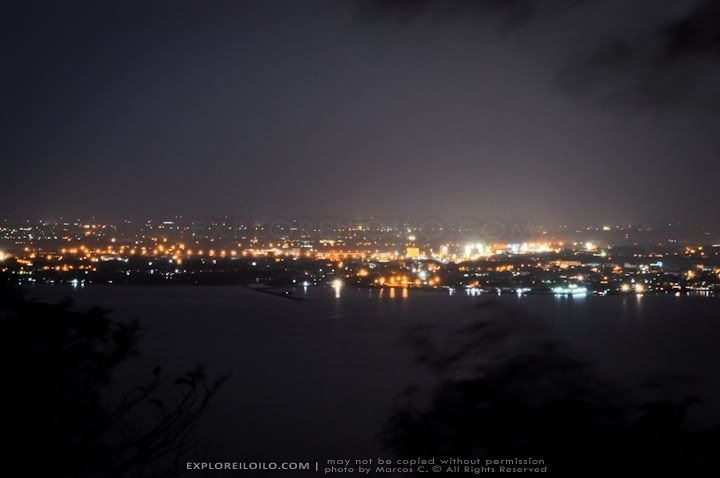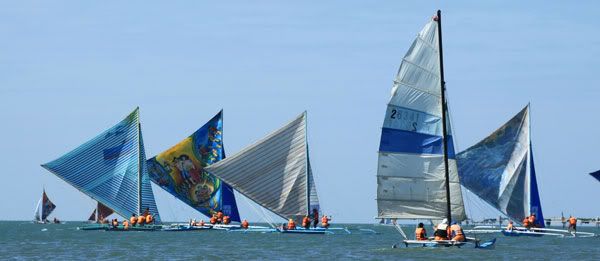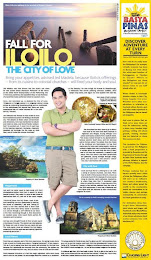A privilege speech delivered at the regular session of the Sangguniang Panlalawigan of Iloilo, held at the Provincial Capitol, Iloilo City
February 1, 2011
by
Demy P. Sonza
MSP, 2nd District of Iloilo
THE opening of the port of Iloilo to international trade in 1855 spurred the development of the incipient sugar industry in Iloilo and Negros. The “Sugar Boom” started in the 1860’s. By the 1880’s, many Ilonggo families were already rich enough to send their children to college in Manila and some even to schools in Europe.
Among the young Ilonggos who studied abroad was Raymundo Melliza who was born in Molo on March 15, 1854. His parents were Cornelio Melliza and Gregoria Angulo. Don Cornelio Melliza, was a rich trader and shipowner. Raymundo obtained the bachelor of arts degree from the University of Sto. Tomas in 1873. Sailing to Spain for further studies, he enrolled at the University of Barcelona. The following year he transferred to the University of Sevilla. From this university he got the licenciate in law, and finally the doctorate (doctorada en leyes y canones ecclesiasticus) in 1879 when he was 25 years old.
Unlike Graciano Lopez Jaena who suffered from penury while in Spain, Melliza enjoyed la dulce vida en España because he had enough money. Felix Roxas of Batangas who was also in Spain at the time, wrote with a tinge of envy that Melliza “bought four splendid Andalucian horses for breeding purposes when he returned to Iloilo.”
Back in Iloilo in 1880, Don Raymundo was appointed promotor fiscal of Negros Occidental. He was made a judge of the Court of First Instance in 1883 and served in different provinces until 1886. But perhaps because of the meager salary, he did not stay long in government service. He resigned to practice law and engage in business.
Iloilo did not participate in the Revolution of 1896. By March 1898, however, a group of Ilonggo ilustrados, including Don Raymundo Melliza, met in Molo and formed the Comite Conspirador to prepare for the Revolution. As an offshoot of the Spanish-American War, Commodore George Dewey destroyed the Spanish naval force in Manila Bay on May 1, 1898. General Emilio Aguinaldo launched the second stage of the Philippine Revolution later in that month and on June 12, proclaimed Philippine independence in Kawit, Cavite.
In an effort to keep the Ilonggos loyal to Spain, General Diego de los Rios, commanding general of the Spanish forces in Southern Philippines, created the Council for Reforms. He named the following as members of the council: Raymundo Melliza, Victorino Mapa, Fernando Salas, Jovito Yusay who were all lawyers, and Venancio Concepcion, businessman. Unknown to De los Rios, all these prominent men were members of the Comite Conspirador.
Manila fell into the hands of the Americans on August 13, 1898. The Spanish colonial government transferred its capital to Iloilo City and named Diego De los Rios as the new Governor General. The Revolution flared up in Iloilo in October. On November 17, the Ilonggo leaders convened in Sta. Barbara and organized the Revolutionary Government of the Visayas with Roque Lopez as president. General Martin Delgado was formally designated commander of the Revolutionary Army which was referred to as the Ejercito Libertador.
By the middle of December, the Ejercito Libertador was laying siege to Iloilo City. When General De los Rios learned that the Treaty of Paris ending the Spanish-American War was signed on December 10, he lost the will to fight and negotiated for peace. On December 24, he sailed with his troops to Zamboanga enroute to Spain. The following morning, Christmas day, General Delgado’s Liberating Army staged a victory parade into la muy leal y noble Ciudad de Iloilo.
The Ilonggos reorganized the local government of Iloilo City and Juan de Leon was chosen the local president or city mayor. Raymundo Melliza was named local president of Molo.
The last Spanish governor-general sailed away on December 24, but on December 28, four American warships arrived at the Iloilo harbor from Manila. The commander of the expedition, Gen. Marcus Miller, requested permission to land saying that they had come as friends. But the Ilonggo officials refused to grant his request without expressed instructions from General Emilio Aguinaldo of the Philippine Revolutionary Government.
Miller could not force his way because U.S. President William McKinley had ordered that armed conflict with the Filipinos should be avoided while the Treaty of Paris was pending ratification by the U.S. Senate. One day, Gen. Miller tried diplomacy. He sent his army surgeon, Dr. Henry DuR. Phelan, to negotiate with the Ilonggo officials.
“We have sacrificed lives and money to destroy the power of Spain,” Phelan told the Ilonggo leaders.
Melliza who was the Ilonggo spokesperson replied, “We have also made great sacrifices in lives.” He paused for a moment and added, “We have the power to govern ourselves and need no assistance.”
Failing to persuade the native officials to let the American ships land, Phelan dropped a threat. He said the Americans could destroy Iloilo any time with the big guns from their ships. Melliza stood up and forcefully answered, “We will withdraw to the mountains and repeat the North American Indian warfare. You must not forget that.”
On January 17, 1899, Roque Lopez resigned as president of the Federal State of the Visayas in order to take command of a brigade of the Revolutionary Army. Raymundo Melliza was elected the new president, with Nicolas Jalandoni as vice president.
The Filipino-American War broke out in Luzon on February 4, and on February 11 General Miller bombarded Iloilo and landed his troops. The Filipino forces fell back to their line of defense outside Jaro and checked the American advance. The Filipino forces held this line for eight months. It was only in November when more troops had arrived from the United States, that the Americans broke through the line. Gen. Delgado resorted to guerrilla warfare which lasted more than a year.
Melliza was not able to flee when the Americans took Iloilo City. He surrendered. On May 29, 1899, Gen. Elwell Otis, the Military Governor of the Philippines, reorganized the Supreme Court. He named Melliza president of the Military Branch of the Supreme Court with Ambrosio Rianzares, Julio Llorente, Major R.W. Young, and Captain W.E. Brikhimer as magistrates.
Melliza served on the Supreme Court from May 29, 1899 to May 4, 1900 when he resigned because of ill health. He returned to Iloilo. Guerrilla warfare was still raging in the province. In November that year, the American authorities asked him to join the Peace Committee that would appeal to Gen. Delgado and his guerrilla leaders to surrender. The other members of the Peace Committee were Gen. Pablo Araneta, Cornelio Melliza, Victorino Mapa, Jovito Yusay, and Juan de Leon.
Gen. Delgado formally surrendered on Feb. 2, 1901 during the fiesta of Jaro. On April 11, he was installed as the first governor of Iloilo Province and in the first local elections held on March 3, 1902, he was elected to the same position.
Melliza, on the other hand, founded the Instituto de Molo in 1901 with Manuel Locsin, a fellow lawyer. Melliza also became first vice president of the Asociacion de Agricola de Panay y Negros that was formed on October 11, 1903. The other officers of the Asociacion were Juan de Leon, president; Ruperto Montinola, second vice president; Benito Lopez, Francisco Villanueva, Manuel Locsin, Claudio Lopez, Juan Araneta, Martin Delgado, board members; Esteban de la Rama, treasurer; and Jose Lopez Vito, secretary.
In 1904, Delgado did not run for reelection as governor. He opted to run for, municipal president of Sta. Barbara. Melliza decided to run for governor. His opponents were Juan de Leon and Benito Lopez, the president and vice president, respectively, of Iloilo City. Don Raymundo won and became the second governor of Iloilo.
Even when he was already governor, Melliza remained active in agriculture and business. He was elected president of the Iloilo Chamber of Commerce and Agriculture. In this capacity, he sent a petition to the U.S. Congress to remove the import duties (Dingley Tariff) on Philippine sugar entering the United States. This was probably the first formal petition sent to Washington D.C. on the subject. The Filipinoes campaign for the lifting of U.S. import tax on Philippine sugar finally succeeded in 1909 when the U.S. Congress approved the Payne-Aldrich Tariff Act.
Benito Lopez prepared well for his return bout with Governor Melliza. In the election of February 1, 1906, 28-year old Lopez beat the 52-year old incumbent with an overwhelming majority. The following year, Melliza ran for assemblyman in the Second District, but lost to a young lawyer, 25-year old Nicolas Jalandoni who subsequently became the speaker protempore of the First Philippine Assembly.
Don Raymundo devoted his time to the Instituto de Molo which produced such luminaries as Assemblyman Francisco Varona, poet laureate Flavio Zaragoza Cano, Concon Delegate Delfin Gumban, Governor Timoteo Consing, Mayor Serapion Torre, and Assemblyman Jose D. Evangelista. Melliza also remained active in community affairs. For instance, he was on the board of the Asociacion de los Veteranos de la Revolucion. One of the projects of the veterans association was the construction of the monument to Lt. Col. Francisco Jalandoni that stands in front of the Iloilo National High School.
Melliza retired from politics. But in 1935 when he was already 81, he was persuaded to run again in the first presidential elections under the Philippine Commonwealth. The Nacionalista Party put up Manuel Quezon for president and Sergio Osmeña for vice president. Melliza ran for vice president together with General Emilio Aguinaldo. The third tandem was composed of Bishop Gregorio Aglipay and Juan Nabong.
As expected, Quezon and Osmeña won. Why did two old men, Aguinaldo and Melliza, run when they knew they did not have any chance to win? My own guess is that they ran because they believed that in a democratic election, there should be more than one candidate to a position.
Raymundo Melliza was married to Germana Conlu. Their children were Pio Sian Melliza, Vicente Sian Melliza, Remedios, married to Eusebio Villanueva, and Teresa who was married to a Valdevarona. Don Raymundo died on November 11, 1945 at age 90 years and nine months and was buried at the Molo Catholic Cemetery.
http://www.panaynewsphilippines.com/feature4.htm




















